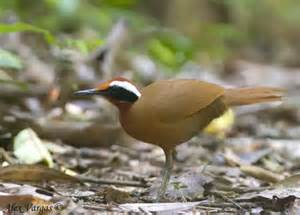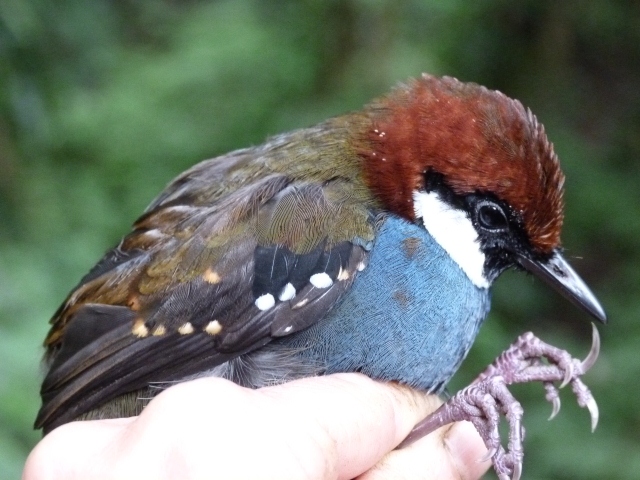
Ptilorrhoa caerulescens
TAXONOMY
Eupetes caerulescens Temminck, 1835, Lobo, Irian Jaya,
Indonesia.
Resident
Cinclosoma punctatum
Resident
Ptilorrhoa caerulescens
OTHER COMMON NAMES
English: Lowland eupetes; French: Ptilorrhoa bleu; German:
Blauflцter; Spanish: Hablantнn del Valle.
PHYSICAL CHARACTERISTICS
8.7 in (22 cm); 1.7–2.2 oz (49–61 g). A smaller bird with
mostly blue plumage. Black eye stripe from bill to breast, black
primaries, and white throat and upper breast.
DISTRIBUTION
P. c. caerulescens: west New Guinea; P. c. neumanni: north New
Guinea; P. c. nigricrissa: south New Guinea; P. geislerorum:
northeast New Guinea (sometimes regarded as separate
species). Lowlands and foothills up to about 990 ft (300 m).
HABITAT
Inhabits wetter forests, such as rainforest, monsoon forest, adjoining
tall secondary growth, and gallery forest.
BEHAVIOR
Sedentary and territorial. Usually found in pairs or small
groups. Terrestrial, walks daintily along the ground, with a
bobbing head. Elusive, occupying areas of low vegetation
cover. This species’ song is among the more characteristic bird
calls of the forest.
FEEDING ECOLOGY AND DIET
Feeds on insects and small invertebrates of the ground litter.
When foraging, tosses leaves to aside using the bill.
REPRODUCTIVE BIOLOGY
The cup-shaped nest is placed in a depression in the ground at
the base of a tree or between roots. The two eggs are spotted
and streaked against a light brownish background. Breeding
takes place from the mid dry to early wet season.
CONSERVATION STATUS
Generally common.
SIGNIFICANCE TO HUMANS
None known.
Other popular Animals
Photo Gallery of - Blue jewel-babbler




 Animalia Life
Animalia Life